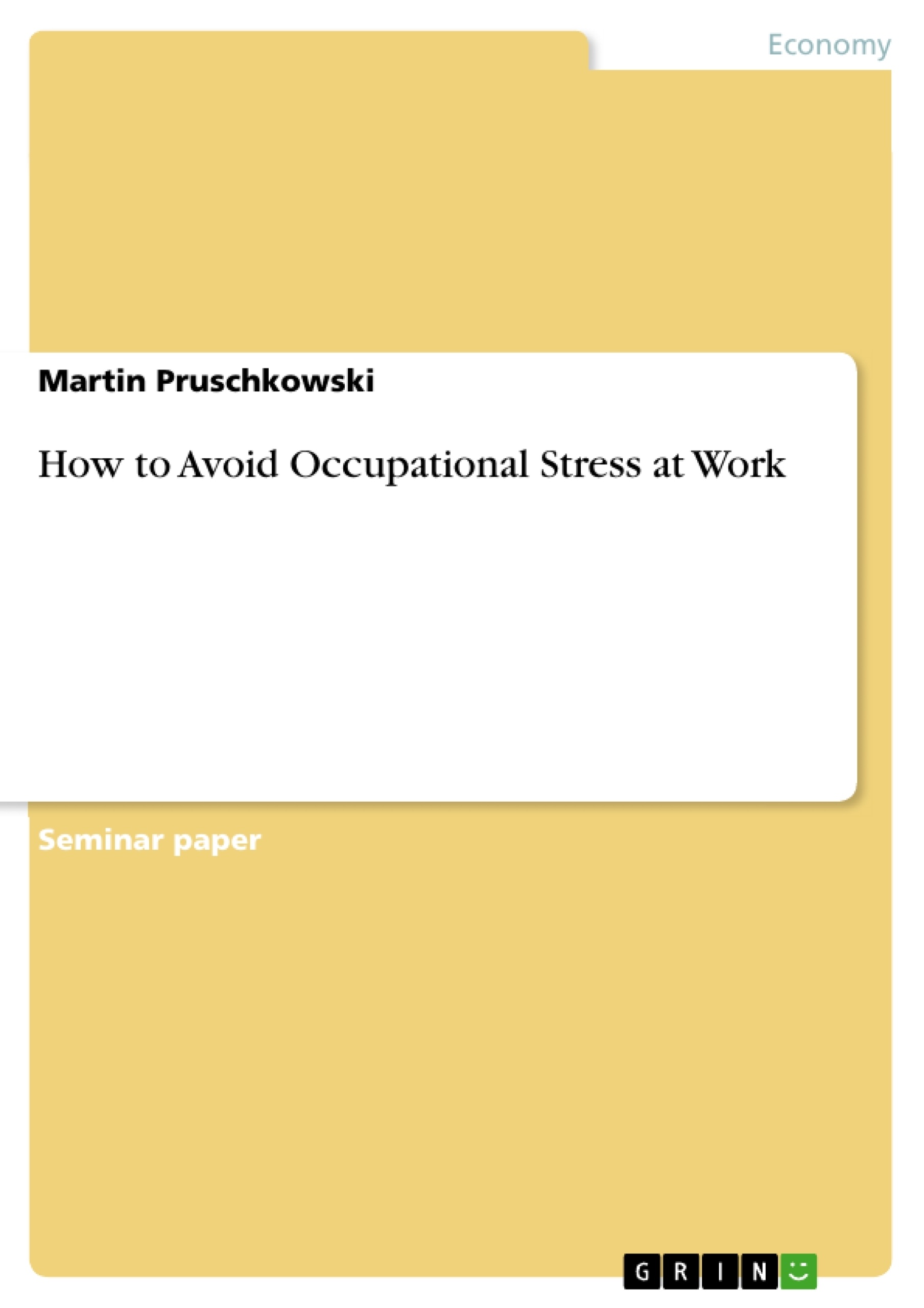In all areas of life we are surrounded today by stress, which is why people feel constantly stressed. Especially at work we are tending more and more to be stressed because of deadlines, hectic, constant accessibility and modern communication. Stress at work affects not only the health and quality of life of individuals but also harms businesses and the entire economy. The medical costs for mental diseases have been increased dramatically in the last five years.
There are various models such as the “Stress and Strain-Modell” from Rohmert and Rutenfranz, the “Job-Demand-Control-Model” from Karasek or the “Transactional Stress Model” from Lazarus & Folkman, all trying to explain what is stress and how it can be combated. What all models have in common is the fact that is always assumed an imbalance between requirements and available resources to cope the situation. As already mentioned occupational stress is the largest stress factor in Germany. The reason for this is certainly the changing world of work and the variety of stressors that lurk at work for us. These can be divided into different groups. Typically a stressor does not occur by itself but in combination with other stressors at the same time. What a person can handle depends on the duration, intensity and number of stressors and other occupational exposures.
Basically there exist two different approaches to reduce workrelated stress. On the one hand there is the structural prevention that focuses on the improvement of qualification factors, work organizational factors, social factors, technical and ergonomic factors and on the other hand there is the behavioral prevention that is concentrating on the improvement of coping skills of employees. Important is to consider and address the phenomenon of stress holistically. The company Deutsche Bahn AG has recognized the signs of the times early and offers a bunch of different tools to protect their employees from stress. In the future stress will become more and more common and the public will pay more attention to this topic because the number of mental diseases will continue to rise. Therefore there has to be a focus on occupational health and safety. In the light of demographic change, it is more important to counteract growing absenteeism and early retirement. Stress, however, can never be completely avoided so the topic of occupational stress will be at the top of the political and companies’ agenda.
Table of Contents
Executive Summary
Table of Contents
List of Abbreviations
List of Figures
List of Tables
1 Introduction
2 Objectives
3 Methodology
4 Stress fundaments
4.1 Terms and models
4.2 Stress as risk and opportunity
4.3 Stress symptoms
5 Occupational stress
5.1 Potential stressor at work
5.2 Stress management at work
5.2.1 Structural prevention
5.2.1.1 Qualification factors
5.2.1.2 Work organizational factors
5.2.1.3 Social factors
5.2.1.4 Technical and ergonomic factors
5.2.2 Behavioral prevention
6 Case study DB AG
7 Conclusion
8 Outlook
Bibliography XIX
- Quote paper
- Martin Pruschkowski (Author), 2014, How to Avoid Occupational Stress at Work, Munich, GRIN Verlag, https://www.grin.com/document/432955
-

-

-

-
Upload your own papers! Earn money and win an iPhone X. -

-
Upload your own papers! Earn money and win an iPhone X. -

-
Upload your own papers! Earn money and win an iPhone X. -

-
Upload your own papers! Earn money and win an iPhone X. -

-
Upload your own papers! Earn money and win an iPhone X. -

-
Upload your own papers! Earn money and win an iPhone X. -

-
Upload your own papers! Earn money and win an iPhone X.

